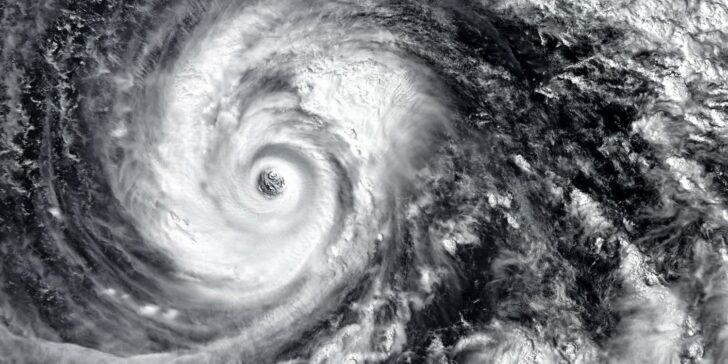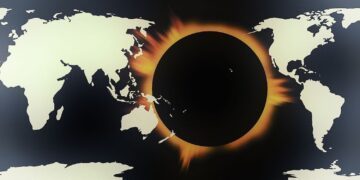Hurricanes, shrouded in mythology and fear, have tormented coastlines for millennia.
With so many different cultures having experienced these terrifying events, it’s no wonder they have captured our attention.
After all, hurricanes have a nasty way of turning people’s lives upside down and leaving a path of destruction in their wake.
To stay safe and informed, make sure to read these 15 facts about hurnbspricanes.
Hurricanes are named after “Huracán,” the Mayan god of wind, storms, and fire.
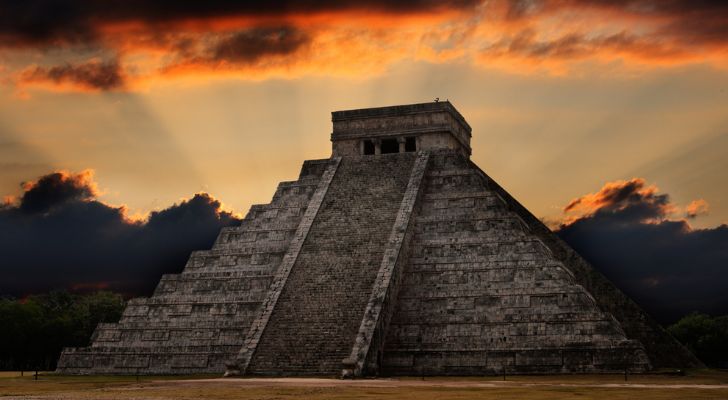
The word “hurricane” comes from a Carib tribe, the Taino, who had a god of evil called Huricán.
Go further back in time, though, and the Mayan god of wind, storms, and fire had an almost identical name.
Instead of adopting the Mayan name, arriving Spaniards instead took inspiration for the word from the Taino, who lived in modern-day Florida and the Caribbean.
Tropical cyclones, typhoons, and Hurricanes are pretty much all the same.

Meteorologists use a few classifiers to decide if a storm is a hurricane or just a big storm, and they’re mostly location-based.
Hurricanes only develop in the Atlantic Ocean or northeastern Pacific Ocean. Next, they must reach a continuous wind speed of 75mph (120kph)
Similar storms that develop in the Indian Ocean and South Pacific are called tropical cyclones, and typhoons develop in the northwestern Pacific Ocean.
In fact, they’re all technically classified internationally as types of tropical cyclones.
Hurricane Galveston was the deadliest hurricane in US history.
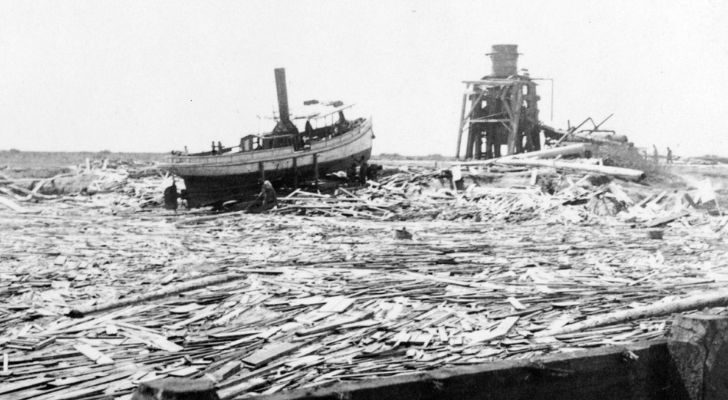
With winds exceeding 120mph (193kph), the hurricane caused an estimated 30 million dollars of damage; however, the number is likely higher.
The city of Galveston is an island municipality just off of the coastline of Texas. Like much of the Texas coastline, it is incredibly vulnerable to hurricanes.
The 2017 hurricane season was the most costly in US history.

Hurricane season begins on June 1 and ends around November 30. During 2017, the US experienced seventeen named storms, ten hurricanes, and six major hurricanes.
These storms caused 294.92 billion dollars in damages, with the most damaging being hurricanes Harvey, Irma, and Maria.
Hurricane Nate, in the same year, was the worst natural disaster in Costa Rican history. Reaching wind speeds of 90 mph (150 km/h), Nate claimed the lives of 48 people in the region.
Tropical storms are categorized by the Saffir–Simpson hurricane scale.

Herbert Saffir and meteorologist Robert Simpson created the scale in 1971 to categorize hurricanes and the damage they will likely cause.
Similar to the Richter scale for earthquakes, it is used to predict potential damage.
Category 5 hurricanes are quite rare, with only 29 known Category 5 hurricanes forming between 1960 and 2024.
That said, 2005 saw four Category 5 hurricanes: Emily, Katrina, Rita, and Wilma.
Sandy was the largest hurricane by diameter in recorded history.

At its peak, Hurricane Sandy was 900 miles (1,448 km) in diameter. It swept up the East Coast in 2012 and destroyed more than 300,000 homes in New York alone.
What started as a hurricane became a superstorm when Sandy merged with a winter storm. Superstorm Sandy ultimately had a devastating effect on 24 US states.
Typically, hurricanes develop in warm tropical weather, while superstorms often involve cold weather patterns and occur only once every few decades. In Sandy’s case, it was both.
Lightning is very rare in hurricanes.

Hollywood often portrays lightning in hurricanes; however, this is not the case most often.
When lightning is visible in a hurricane, it is mostly visible in the eye wall. The eye of the storm is the calm center of a hurricane, and the eye wall is the barrier between the eye and the rest of the storm.
When lightning is present, it often signifies a strengthening of the storm.
Hurricane Ian in 2022 is a great example of this, where satellites and storm chasers both captured striking footage of eyewall lightning.
People brave enough to chase storms are called “storm chasers.”

The first ever storm chaser, David Hoadley (born 1938), started chasing storms in North Dakota using information from weather centers and airports.
He also started Storm Trak in 1977, a magazine for and about storm chasing.
Storm chasers face many dangers, from hail to tornados. The most dangerous thing for storm chasers is driving.
Due to the terrible weather conditions, most incidents involving storm chasers have happened due to driving in these conditions.
Hurricane names come from a list of rotating names.

Names are given to large storms for ease of communication between meteorologists and the public.
In 1953, the US National Weather Service started naming storms using only female names. Now, names are alternated between male and female first names, a practice that started in 1978.
Currently, the World Meteorological Organization (WMO) handles the naming of tropical storms.
They use a list of names that get reused; however, when a particularly destructive storm occurs, the name is crossed off the list to prevent any confusion.
Alexander Hamilton wrote about a Hurricane in the Caribbean.

At the time, Hamilton was an office clerk at 17 years old and wrote a detailed account of a hurricane in St. Croix, a town in the Caribbean.
Writing, “Hark-ruin and confusion on every side. Tis thy turn next: but one short moment – even now – oh lord help! Jesus be merciful,” he describes the terrifying event.
Local businessmen were so impressed with Hamilton’s account that they raised funds to send him to America, where he joined George Washington’s staff to help write the constitution.
The USA ranks fifth in tropical storm hits since 1970.
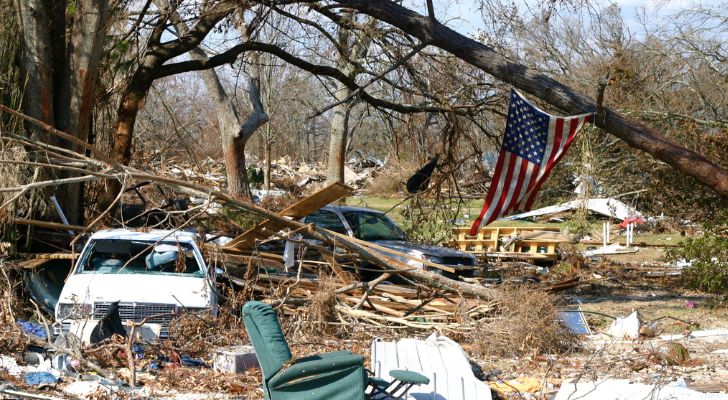
In 1970, worldwide satellite imaging became possible, giving scientists the ability to track and predict storms around the world.
Since then, China has received the most hits, followed by the Philippines, Japan, Mexico, and finally the USA.
Of course, when it comes to actual hurricanes, the USA ranks first because, in other regions, they are called Typhoons or Cyclones.
Hurricanes sometimes dance with each other.

The Fujiwhara effect, although rare, is incredibly dangerous.
When two hurricanes come into close proximity, they often spin around each other before merging to become a much bigger hurricane.
When they are both about the same size, they spin around a common center before coming together.
When one is smaller than the other, though, the smaller one will orbit the larger hurricane until it is absorbed by the larger storm.
Weather organizations fly drones directly into hurricanes.

The US government flies drones and planes into hurricanes regularly to gather important information about these storms. The first-ever flight like this took place during World War II in 1943.
In 2021, scientists were able to fly a drone into Hurricane Sam and capture footage of winds up to 91 mph (146 kph) and waves as high as 42 feet (12.8 meters)!
Hurricanes are most dangerous the moment they hit land.

When a hurricane hits land, a phenomenon called a storm surge can happen. Huge winds cause water from the ocean to flood the coast, sometimes reaching 20 feet (6 m) in height.
Storm surges and subsequent flooding account for around three-quarters of the lives lost during hurricanes, including most of those lost in 2005’s Hurricane Katrina.
Climate change might make hurricanes worse.
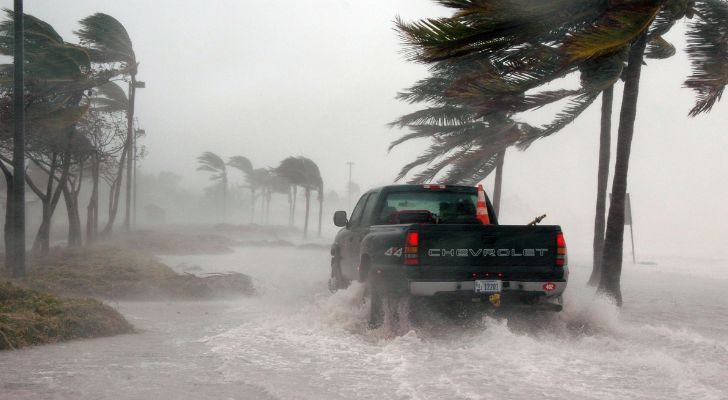
Hurricanes are powered by warm ocean waters. As the ocean gets warmer, more hurricanes will form.
Ethan Gutmann, from the National Center for Atmospheric Research, proved this through a simulation where he increased the ocean’s surface temperature.
This caused the hurricanes to generate more rain and higher wind speeds.
Climate change isn’t the only thing that could be causing an increase in hurricanes, though.
El Niño and La Niña events cause the ocean’s waters to warm or cool and could affect global weather patterns.
Each year, so many lives are affected by huge tropical storms all around the world.
This has created a need for scientists, meteorologists, and brave storm chasers to document and study this phenomenon.
Hurricanes are incredibly dangerous, and as the world’s weather patterns shift, they’ll become even more so.
The best thing to do is to stay updated with your local weather stations and be prepared. When a storm like this hits, do you know what to do?

